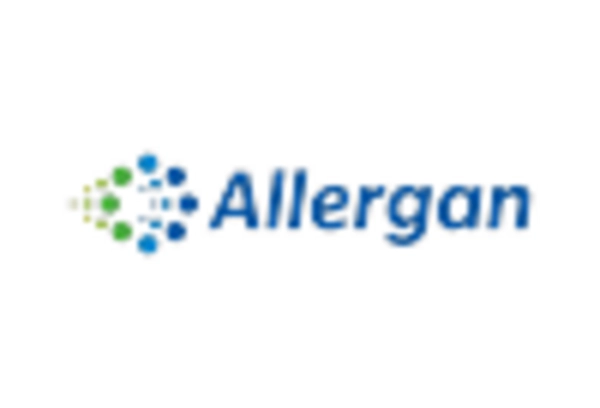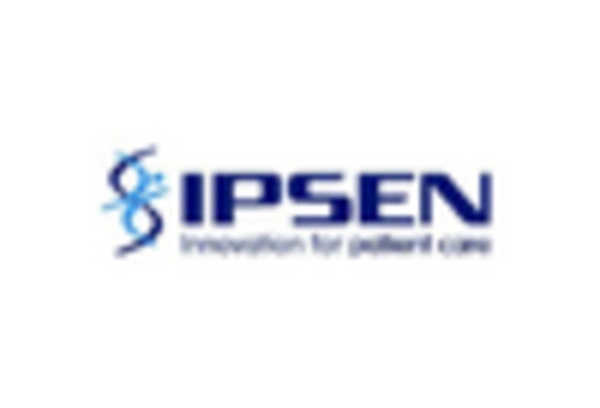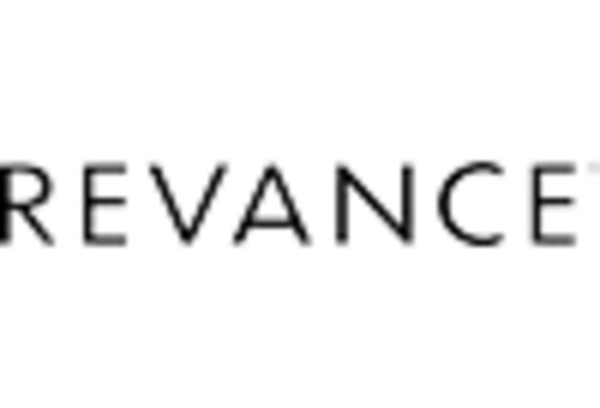Rising Disposable Incomes
In the GCC, rising disposable incomes are significantly impacting the medical aesthetics market. As individuals experience increased financial freedom, they are more inclined to invest in aesthetic treatments that enhance their appearance. The region has seen a steady increase in per capita income, which has led to a greater willingness to spend on personal care and beauty services. This trend is particularly evident among the younger demographic, who prioritize aesthetics and are more likely to seek out advanced treatments. The medical aesthetics market is thus benefiting from this economic shift, as more consumers view aesthetic procedures as essential rather than luxury expenditures. This financial empowerment is likely to sustain the growth trajectory of the medical aesthetics market in the coming years.
Increased Focus on Mental Well-Being
The medical aesthetics market is increasingly intersecting with the focus on mental well-being in the GCC. As awareness of mental health issues rises, individuals are recognizing the link between self-esteem and physical appearance. Aesthetic procedures are often perceived as a means to boost confidence and improve overall mental health. This growing understanding is driving more consumers to seek out medical aesthetics treatments as a form of self-care. Clinics are responding by offering tailored services that address both aesthetic and psychological needs, thereby enhancing the appeal of the medical aesthetics market. This trend suggests a holistic approach to beauty and well-being, which may further stimulate market growth.
Advancements in Treatment Technologies
Technological advancements are revolutionizing the medical aesthetics market, particularly in the GCC. Innovations in treatment technologies, such as laser therapies, injectables, and skin rejuvenation techniques, are enhancing the efficacy and safety of procedures. These advancements not only improve patient outcomes but also expand the range of services available to consumers. For instance, the introduction of non-invasive techniques has made aesthetic treatments more accessible and appealing to a broader audience. As technology continues to evolve, practitioners are likely to adopt new methods that align with consumer preferences, thereby propelling the growth of the medical aesthetics market in the region.
Cultural Shifts Towards Beauty Standards
Cultural shifts within the GCC are playing a pivotal role in shaping the medical aesthetics market. Traditional beauty standards are evolving, with an increasing acceptance of cosmetic procedures as a means to achieve desired looks. This change is influenced by various factors, including exposure to global beauty trends and the normalization of aesthetic enhancements in popular culture. As societal perceptions shift, more individuals are likely to consider medical aesthetics as a viable option for self-improvement. This cultural transformation is expected to drive market growth, as the medical aesthetics market adapts to meet the changing preferences and expectations of consumers in the region.
Increasing Demand for Aesthetic Procedures
The medical aesthetics market is experiencing a notable surge in demand for aesthetic procedures across the GCC region. This trend is driven by a growing awareness of personal grooming and self-image among consumers. According to recent data, the market is projected to grow at a CAGR of approximately 12% from 2025 to 2030. This increasing demand is not only attributed to the desire for enhanced physical appearance but also to the rising influence of social media, where individuals seek to present an idealized version of themselves. As a result, clinics and practitioners are expanding their service offerings to include a wider range of non-invasive and minimally invasive procedures, thereby contributing to the overall growth of the medical aesthetics market in the GCC.

















Leave a Comment